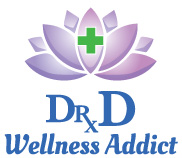“There is sufficient evidence of acupuncture’s value to expand its use into conventional medicine.”
-National Institute of Health, 1997 Consensus on Acupuncture
When someone says to me – “I don’t believe in acupuncture” – it sparks one of my favorite conversations to have about health, wellness, and medicine! Like many practices in Eastern medicine, acupuncture is a treatment modality that has been practiced for over 5,000 years. The modern Western Medical Model, including technologically advanced surgeries and industry sponsored pharmaceutical medicines, has existed for only a couple of hundred years, and is truly in its infancy by comparison.
Thanks to contemporary research, acupuncture is recognized by leading national and international health organizations as an effective, alternative or adjunctive treatment option for a wide variety of medical problems. It is a relatively safe, effective and natural approach to reestablish and maintain health and wellbeing.
Before diving into the science, let’s talk about the basic common sense underlying acupuncture and essentially all forms of Eastern medicine.
If you ask any educated lay person or scientist, they would agree that science, specifically the field of quantum physics, has proven the following: all matter is made up of elements, all elements are made up of sub particles called protons, neutrons, and electrons, and these sub particles are comprised of primarily space and superstrings of energy. That’s right. Even though the physical seems so solid to the human eye, it is made up of nothing but space and energy when analyzing the most fundamental form of matter. Wouldn’t common sense tell us that energetic imbalances could be diagnosed and treated – just like symptoms and disease are?
Ayurveda, one of the oldest Eastern medical practices in the world, originates from India and describes six stages of disease. The first is energetic imbalance, and the last is actual symptom/disease development. Doesn’t it makes sense to treat disease at the first point possible, addressing the most universally fundamental physiologic imbalance at the energetic level? Or do you prefer the Western Medical Model – wait until the end, the development of symptoms and disease?
But forget common sense and clinical opinion or experience. Let’s talk hard science. Modern research is finally starting to understand the secrets of acupuncture through new studies performed by leading scientists, healthcare systems, academic institutions, and medical research facilities worldwide. Because of this research, acupuncture is now receiving wide acceptance as a respected, valid, and effective form of health care. In a study published in the Archives of Internal Medicine, 51% of physicians understand the efficacy and value of acupuncture, referring patients to acupuncturists more than any other alternative healthcare provider.
If acupuncture “didn’t work”, the National Center for Complementary and Alternative Medicine wouldn’t have granted 8 grants that directly relate to acupuncture, Chinese herbal medicine and traditional Chinese medical research, totaling more than 9.5 million dollars in 2004. And that was 15 years ago…
So what exactly is the science behind acupuncture? Several theories have been proposed, including the neurotransmitter, autonomic nervous system, vascular-interstitial, blood chemistry, and gate control theories. Whether it is one or a combination of them all, the universal applicability of acupuncture make sense when you look at the fundamental nature of the various theories.
Acupuncture effects higher brain areas, stimulating the release of norepinephrine, acetylcholine, several types of opioids, and enkephalins throughout the brain and spinal cord. These neurotransmitters then positively influence the immune and antinociceptive systems, improve their own turnover rate, and normalize the autonomic nervous system. Acupuncture also enhances or creates closed-circuit transport of electrons within tissues, facilitating healing by the transfer of material and electrical energy between normal and damaged tissues. In addition, acupuncture has the ability to both raise and lower blood concentrations of triglycerides, cholesterol, and phospholipids, allowing it to restore metabolic homeostasis. Lastly, acupuncture activates non-nociceptive receptors that inhibit the transmission of pain signals.
Given the proposed theories suggested from acupuncture’s wide effects on the human body, it should be unsurprising that there are positive data for acupuncture in a host of conditions, which will be discussed in depth in Part 2 of this article. A few of the conditions and research I will discuss include pain, cancer, asthma, chronic obstructive pulmonary disorder (OPD), insomnia, depression, arthritis, and high blood pressure.
In summary, it makes sense that diagnosis and treatment could start at the most basic physiological level – energy. There are over 5,000 years of clinical practice supporting this ancient modality. Present day, there is so much supportive research recognized by international organizations and over half of the medical doctors in the United States as an effective alternative or adjunct treatment to treat a variety of diseases. For the initial skeptic, I have just one question – do you still not “believe” in acupuncture?
More articles to come on the data for acupuncture in a variety of disease states, what to do to get started or if you have had a bad experience, and some of the common risks of this relatively safe procure. I’m also excited to share with you how you can employ this modality by way of accupressure (needle free!) right in the comfort of your own home.
References:
- “A review of the incorporation of complementary and alternative medicine by mainstream physicians.” Astin, JA et al. Arch Intern Med. 1998; (158).
- Neuro-Acupuncture. “Scientific evidence of acupuncture revealed.” Cho ZH, et al. 2001.
- Acupuncture- “A Scientific Appraisal.” Ernst E., White A., 1999, p.74.
- Acupuncture Energetics. “A Clinical Approach for Physicians.” Helms, Dr. J., 1997, pgs 41-42, 66.
- Anatomy of Neuro-Anatomical Acupuncture, Volume 1, Wong, Dr. J., 1999, p.34.
- National Institute of Health Consensus Conference on Acupuncture, “Acupuncture Activates Endogenous Systems of Analgesia.” Han, JS, 1997 (Bethesda, MD).
- Neuro-Acupuncture. “Scientific Evidence of Acupuncture Revealed.” Cho ZH, et al. p.116.
- National Institute of Health (NIH), World Health Organization (WHO), National Certification Commission for Acupuncture and Oreintal Medicine (NCCAOM), American Association of Acupuncture and Oriental Medicine (AAAOM)
